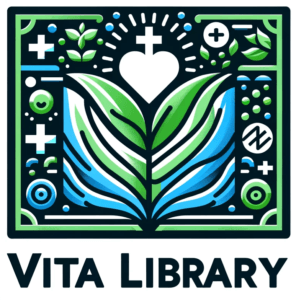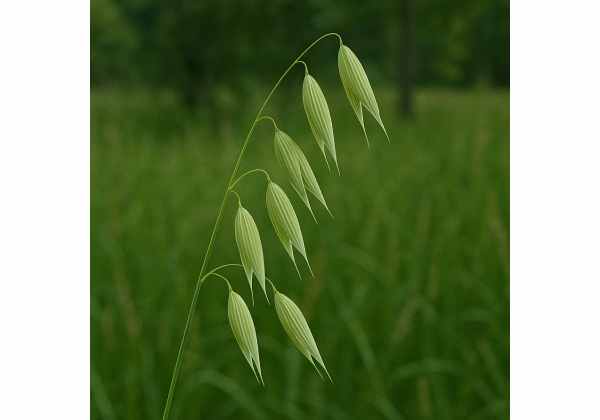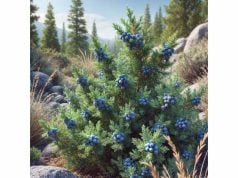Oat straw, derived from the stems and leaves of the oats plant (commonly Avena sativa), has captured the attention of traditional herbalists and modern wellness enthusiasts alike. Renowned for its calming influence, mineral richness, and subtle restorative effects, oat straw is widely sought after for supporting nervous system balance, healthy skin, and overall vitality. Research suggests that its blend of B vitamins, trace minerals, and unique phytochemicals can offer soothing, nourishing properties. Beyond relaxation teas, oat straw appears in baths, topical infusions, and dietary supplements. In this article, we’ll examine the health benefits, active compounds, and uses of oat straw, highlighting how this humble plant can uplift both mind and body.
Table of Contents
- Comprehensive Botanical Background and Growth Requirements
- Phytochemistry and Integral Compounds
- Health-Boosting Properties and Core Traits
- Everyday Applications and Safety Measures
- Key Scientific Findings and Current Research
- FAQ
Comprehensive Botanical Background and Growth Requirements
Oat straw may sound like an afterthought of the grain harvest, but it actually holds a key position in herbal traditions across many cultures. Its lineage traces back to the common oats plant, which farmers worldwide have cultivated for millennia due to its nutritious grains. During cultivation, the green, grassy stems grow tall in the fields, culminating in the production of mature oat heads near the top. Once farmers collect the ripe oats for food, they may retain the leftover stalks—coarse, slender plant material known as oat straw. While this leftover portion might seem mundane at first glance, it carries numerous phytochemicals and minerals.
Below, let’s look more closely at how oat straw develops, its formal botanical standing, and the environmental factors shaping its vitality.
Taxonomy and Lineage
- Family: Poaceae (the large family of grasses)
- Genus: Avena
- Species: Avena sativa
- Common Name: Oat straw (referring to the dried stems/leaves), though some botanical references also call it “green oat straw” if harvested while still green.
Oats likely originated in regions of Eurasia but have spread across temperate climates globally. Over centuries, various cultivars evolved, improving yield, hardiness, and nutritional content. Today, you can find oats growing in North and South America, Europe, parts of Asia, and even cooler regions in Africa. Although the grain remains the main commercial product, the leftover straw is anything but a mere byproduct—it has become valuable in animal husbandry, horticulture (as mulch), and herbal medicine.
Visual Traits
Recognizing oat straw in the field calls for basic familiarity with the oat plant’s morphology:
- Height: Mature oat plants often reach between two and four feet (60–120 cm).
- Stem Appearance: Tall, hollow, cylindrical stems, typically green while growing but turning golden as they dry.
- Leaves: Narrow, elongated, and arranged alternately. Early in the growth cycle, they have a softer texture and bright color.
- Seed Heads (Panicles): Oats display a loose, open branching structure at the top, bearing separate spikelets of seeds.
At the harvest stage, farmers remove the grain portion—oat seeds used for cereals, oatmeal, and so forth. The leftover stems and leaves, once dried, transform into “oat straw” in the herbal sense. If the straw is collected while partially green, it can retain even more chlorophyll and some subtle fresh properties.
Optimal Growing Environments
Oat plants thrive in temperate zones:
- Soil Requirements: They prefer well-drained loamy or sandy loam soils, moderately rich in organic matter. While not overly finicky, oats tend to do best in slightly acidic to neutral pH.
- Climate: They favor cool temperatures, generally between 59–68°F (15–20°C) during their early development phases, but can tolerate ranges outside this ideal.
- Moisture: Consistent watering or rainfall is important, particularly as the plant forms its seed heads. Excessive dryness can stunt growth, while waterlogged soil can lead to fungal issues.
Though commercial farmers usually plan sowing times to optimize the grain yield, the straw likewise benefits from these careful growth conditions. Additionally, small-scale gardeners can cultivate oats as a cover crop. The leftover straw can then be employed in compost, or a portion can be harvested specifically for herbal usage.
Historical and Cultural Context
Humans have made use of the entire oat plant for thousands of years. Texts from medieval Europe mention “oat straw baths,” where people soaked in warm water infused with the leftover stems and leaves to calm sore muscles. Traditional medicine recognized that while the grains fed the body’s muscles and provided energy, the straw might feed the nerves, offering a sense of tranquility and quiet resilience.
Over time, herbalists across different regions discovered that infusions, tinctures, or external preparations of oat straw helped with issues like mild anxiety, restless sleep, and dryness in the skin. Even in modern times, you’ll find many recommending an oat straw bath for an overwhelmed mind, or a gentle oat straw tea to soothe frazzled nerves.
Harvesting and Storage
Whether you’re a commercial grower or a home gardener, harvesting oat straw involves:
- Timing: Typically after the oat grains have mostly matured, but sometimes earlier if one wants a “green oat” character.
- Drying: Lay the stems in a warm, dry place with good airflow. The dryness helps preserve the beneficial compounds and reduces the chance of mold.
- Preparation: Cut or break the straw into smaller pieces for teas and infusions. Keep them in an airtight container, away from direct sunlight, to maintain potency.
This “everyday leftover” thus emerges as a noteworthy herbal ally. Having clarified the plant’s lineage, appearance, and historical significance, let’s dive deeper into what exactly gives oat straw its distinct, health-affirming qualities.
Phytochemistry and Integral Compounds
When you look at a handful of dry oat straw, you might see a bundle of pale stalks. In reality, these unassuming stems and leaves host a variety of active elements that help explain the remarkable healing properties of oat straw. From the minerals that build strong bones to the phytonutrients that support cognitive health, oat straw’s chemical make-up tells an intriguing story.
1. Essential Minerals
One of oat straw’s major claims to fame is its mineral content:
- Silica: Considered vital for healthy hair, skin, and nails. Silica also helps maintain bone density and connective tissue strength.
- Calcium: Key for bone and teeth health, muscle contractions, and nerve transmission.
- Magnesium: Involved in over 300 enzymatic reactions in the body, magnesium is central to muscle relaxation, stress reduction, and energy metabolism.
- Potassium: Critical for fluid balance, nerve impulses, and normal muscle function.
These minerals often feature in modern “beauty from within” narratives, as silica and calcium can fortify structural components in the body. Meanwhile, magnesium and potassium support a healthy cardiovascular system and balanced nervous functioning.
2. Avenanthramides
Although more famously associated with oat grains, avenanthramides also appear in oat straw. These unique polyphenols have garnered attention for their antioxidant and anti-inflammatory capabilities. Studies suggest they may help moderate inflammatory responses and protect cells from oxidative damage. Among herbalists, avenanthramides are often credited with the soothing effect that oatmeal and related oat products can provide for irritated skin.
3. Flavonoids
Oat straw contains various flavonoids—plant-based compounds known for their antioxidant potential. By neutralizing free radicals, flavonoids may decrease cellular stress, contributing to overall health and resilience. Specific flavonoids discovered in oats can also assist in maintaining healthy circulation.
4. Saponins
Saponins appear in small amounts within many grasses and cereal grains, including oat straw. They can facilitate nutrient absorption and offer mild antimicrobial benefits. In synergy with other compounds, saponins may add a gentle immune-modulating factor to oat straw’s repertoire.
5. Vitamins (Particularly B Vitamins)
While not extraordinarily high in vitamins compared to fresh green vegetables, oat straw still carries certain essential vitamins, especially in the B family. B vitamins—like thiamine (B1), riboflavin (B2), and pantothenic acid (B5)—support energy metabolism and nervous system health. Some herbal references also note the presence of vitamin K, which is important for blood clotting and bone metabolism.
6. Alkaloids and Other Compounds
In lesser quantities, oat straw includes trace alkaloids that could contribute to its calming properties. These alkaloids are generally mild and not as potent as the psychoactive alkaloids in some other plants. Nonetheless, they may aid in reducing jitteriness or restlessness, especially when combined with the straw’s robust mineral and vitamin content.
Synergy in Oat Straw
From a holistic perspective, oat straw’s real strength lies in how these elements interact synergistically. Traditional herbal practice emphasizes that it’s not merely about extracting “the one” compound that’s beneficial, but about using the entire matrix of minerals, vitamins, and phytonutrients to nourish the body gently. For example:
- Magnesium + Flavonoids: May help reduce oxidative stress and ease tension.
- Silica + Calcium: Could promote healthy structural integrity in bones, skin, and nails, especially with consistent use.
- Avenanthramides + Saponins: Might bolster healthy inflammatory responses and immune function.
Given this chemical tapestry, it’s no surprise that oat straw has found its way into a host of herbal applications. Let’s see how these integral compounds manifest in the form of tangible health advantages.
Health-Boosting Properties and Core Traits
Oat straw’s reputation as a nourishing, calming plant extends back hundreds of years. Many of its benefits revolve around stress management, structural support, and gentle revitalization. If you’ve ever enjoyed an oatmeal bath, you may already be acquainted with oats’ ability to soothe skin and settle frayed nerves. Here, we delve into the distinctive core qualities that make oat straw a go-to companion for holistic well-being.
1. Gentle Nervine Support
One of oat straw’s hallmarks is its capacity to help settle the nervous system. Herbalists frequently classify it as a “nervine”—an herb that supports nerve health and may foster relaxation. Many people report that sipping an oat straw infusion or taking supplements consistently leads to a subtle sense of calm, without drowsiness or sedation. This effect likely stems from a combination of the straw’s magnesium content and various minor alkaloids.
- Real-Life Example: Individuals juggling busy work lives and home responsibilities might find relief in a calming routine that includes oat straw tea, particularly in the late afternoon or before bedtime.
2. Mineralization for Hair, Skin, and Nails
Silica, calcium, and related minerals in oat straw can help fortify the body’s structural elements. Fans often notice improvements in hair strength and thickness, as well as more resilient nails. Topical applications—like infusing oat straw in oil or adding it to a bath—can also lend softness and a mild protective quality to the skin.
- Everyday Tip: A weekly oat straw soak or foot bath can deliver these minerals through the skin while simultaneously reducing muscular tension.
3. Relaxed Muscles and Balanced Electrolytes
Magnesium stands out for its role in muscle contraction and relaxation. Oat straw, offering a moderate magnesium supply, may help reduce muscle cramping and promote overall muscle comfort. Potassium, another electrolyte found in oat straw, supports fluid balance and nerve function. Together, these minerals can be especially beneficial for individuals with occasional muscle tension, or those who engage in workouts and want an herbal ally for post-exercise relaxation.
4. Calm Energy and Sustained Vitality
Unlike stimulants that offer a short-term energy spike, oat straw often provides a smoother sense of vitality and endurance. The synergy of B vitamins, minerals, and trace nutrients supports energy metabolism at a cellular level. Many people see it as a reliable herb for “everyday resilience,” helping the body adapt to stressors more gracefully.
- Friendly Suggestion: Combine oat straw with adaptogenic herbs like ashwagandha or rhodiola if you’re looking for a balanced approach to combating fatigue and stress. Always check with a healthcare provider for personalized guidance, especially when mixing multiple supplements.
5. Skin-Soothing and Emollient Qualities
Both historical records and modern anecdotal reports describe oat straw’s beneficial impact on irritated or itchy skin. Similar to colloidal oatmeal, which is praised for calming eczema or dry patches, oat straw can be used in baths or compresses to alleviate mild skin grievances. The presence of avenanthramides and certain anti-inflammatory agents is believed to help ease topical discomfort.
- Simple DIY: Make an oat straw bath bag. Fill a muslin cloth with dried oat straw, tie it closed, and let it soak in warm bathwater. A soak of 15–20 minutes can refresh tired skin while relaxing tense muscles.
6. Nervous System Recuperation and Sleep Assistance
While oat straw isn’t a sedative, many herbal enthusiasts see it as beneficial for those seeking deeper rest. The gentle nurturing effect on the nervous system may indirectly aid better sleep patterns, especially if sleeplessness stems from daily stress or anxious thoughts. Combined with other relaxing herbs (like chamomile, lavender, or passionflower), it may help facilitate a calm night’s rest.
7. Support During Life Transitions
Historically, oat straw was often recommended for individuals undergoing significant life changes—postpartum mothers, older adults grappling with reduced vitality, or those recovering from prolonged stress or illness. The idea is that by supplying essential nutrients and gently soothing the nerves, oat straw fosters resilience and adaptability. Though it’s no panacea, this notion of “rebuilding from within” resonates with many holistic health philosophies.
- Case in Point: New mothers sometimes drink oat straw tea to ease tension and support recuperation, given its mild nature. However, always consult with a healthcare professional for personalized advice, as each postpartum journey is unique.
8. Potential for Heart Health
Although more research is needed, the supportive impact of magnesium, potassium, and certain flavonoids found in oat straw could be beneficial for cardiovascular wellness. These nutrients help regulate blood pressure, and in synergy with avenanthramides, may offer a gentle protective effect against daily oxidative stress. Incorporating oat straw infusions, in tandem with balanced nutrition and regular exercise, could be one small step toward heart-friendly habits.
Oat Straw as a Lifestyle Ally
Ultimately, many of oat straw’s perks revolve around its subtle ability to nurture and calm, rather than deliver dramatic or instantaneous changes. Think of it as the friend who quietly supports you in the background, offering structural and nervous system nourishment over time. If you pair consistent oat straw use with a balanced diet, adequate hydration, and mindful stress management, you may find that you rebound from life’s demands with greater ease.
Of course, translating these properties into your daily routine involves practical steps—how to prepare oat straw, recommended doses, and potential side effects. Up next, we’ll walk through everyday applications and essential safety considerations, helping you tap into oat straw’s potential comfortably and responsibly.
Everyday Applications and Safety Measures
Oat straw offers a versatility that suits a range of preferences. Whether you enjoy brewing it into tea, soaking in its gentle infusion, or incorporating it into baked treats, this humble herb can adapt to numerous lifestyles. Below, we explore practical uses, dosage guidelines, preparation methods, and crucial safety insights.
1. Simple Infusions and Teas
Hot Water Infusion
- Method: Steep one to two tablespoons of dried oat straw in a cup of boiling water for 10–20 minutes (or longer for a stronger brew). Strain and enjoy warm.
- Taste: Mildly herbal, slightly sweet, and grassy—complementary to lemon or honey if desired.
- When to Drink: Ideal in the afternoon or evening for calming support. Some opt for a morning cup to gently center themselves before the day unfolds.
Overnight Infusion
- Method: Place about four tablespoons of oat straw in a quart of water at room temperature; cover and let it sit overnight (8–12 hours).
- Outcome: This slow extraction can draw out more minerals and yields a richer flavor.
- Usage: Store leftover infusion in the fridge and drink within one or two days for maximum freshness.
2. Tinctures and Extracts
If convenience or a more concentrated approach suits you, tinctures and standardized extracts are available in health stores and online shops. Tinctures are typically made by soaking oat straw (or milky oat tops) in an alcohol or glycerin base.
- Dosage: Check product-specific instructions, as potency varies. A common guideline might be 2–4 mL of tincture one to three times daily.
- Why Choose Tinctures: They’re easily portable, have a longer shelf life, and allow for quick dosing—especially helpful if you have a hectic schedule.
3. Baths and Topical Applications
Oat Straw Bath Soak
- Supplies: A muslin bag or cheesecloth, 1 cup of dried oat straw.
- Instructions: Tie the straw in the cloth and place it under running warm bathwater. Soak for 15–30 minutes, occasionally squeezing the bag to release more herbal goodness.
- Benefits: Potential relief for minor skin irritations, a soothing effect on sore muscles, and a gentle calm for the nervous system.
Poultices and Compresses
- Use Case: Sprains, bruises, or itchy patches may benefit from local application of an oat straw compress.
- How-To: Brew a concentrated oat straw tea, cool it slightly, then soak a clean cloth in the liquid and apply to the affected area for 10–20 minutes.
4. Culinary Explorations
Although not as common as using the grain or oat milk, there are creative ways to integrate oat straw’s subtle flavors:
- Broth Booster: After preparing a strong oat straw infusion, use it as a stock base for soups or stews. This approach introduces extra minerals without a dominating flavor.
- Herbal Sprinkles: Dried oat straw is sometimes ground into a powder and mixed into bread dough, muffins, or breakfast cereals. Keep in mind that the fibrous texture could be noticeable in large amounts.
- Smoothies: A cooled oat straw infusion can be the liquid base in smoothies, pairing well with fruits and other superfood ingredients.
5. Dosage Recommendations and Customization
- General Use: 1–3 cups of infusion per day, or follow product guidelines for tinctures or capsules.
- Progressive Increase: If you’re new to oat straw, start with small amounts and observe how your body responds.
- Combining with Other Herbs: Oat straw blends beautifully with chamomile, lemon balm, lavender, or even adaptogens like holy basil. Each combination can focus on stress relief, digestive health, or improved sleep—depending on your personal goals.
6. Potential Side Effects
Oat straw is considered gentle, with few reported side effects. However, remain mindful of:
- Allergies: Those with strong grass or oat pollen allergies might exercise caution. Begin with a small dose to see if any irritation or allergic response occurs.
- Drug Interactions: Currently, no major interactions are commonly cited for oat straw. Still, if you take prescription medications, confirm with a healthcare provider to be safe.
- Digestive Upset: Consuming excessive amounts may lead to mild digestive bloating or cramping for some individuals, especially if not accustomed to herbal teas. Scale back if this arises.
7. Warnings and Contraindications
- Celiac Concerns: Oat straw generally contains negligible gluten, particularly if it’s properly harvested and processed. Yet cross-contamination remains possible. People with severe gluten intolerance or celiac disease should purchase from a trusted source that tests for gluten-free purity.
- Pregnancy and Breastfeeding: Often regarded as relatively safe, oat straw is sometimes recommended to nursing mothers. However, always consult a qualified healthcare provider before introducing new herbs during these sensitive times.
- Serious Medical Conditions: Individuals with chronic kidney disease or other conditions affecting mineral balance should consult with a professional. While oat straw can be beneficial, it also carries minerals that might complicate certain medical conditions.
8. Storage and Shelf Life
Maintaining the potency of oat straw calls for:
- Cool, Dry Environment: Store in airtight containers away from direct sunlight, moisture, and heat sources.
- Shelf Life: Properly dried and stored oat straw can retain its quality for up to one year, although many herbalists suggest using it within six to nine months for optimal freshness.
Summary of Practical Use
Oat straw is user-friendly. Its mild flavor, gentle physiological impact, and versatility—teas, baths, tinctures, or even culinary experiments—provide a gateway herb for novices while remaining cherished by seasoned herbalists. By adhering to moderate dosages, safe storage, and mindful pairing with other herbs or health practices, you can harness oat straw’s calming and fortifying qualities every day.
Now that we’ve covered these pragmatic considerations, let’s turn our attention to the robust body of research examining oat straw’s composition and effects. Although the scientific literature may not be as extensive as that on oats themselves, recent findings still highlight promising angles for ongoing study.
Key Scientific Findings and Current Research
Herbal knowledge often blends centuries of anecdotal wisdom with evolving scientific scrutiny. Oat straw, benefiting from oats’ global popularity and well-funded agricultural research, has gained the interest of nutritional scientists and herbal researchers alike. Below are noteworthy investigations and emerging data that strengthen our understanding of oat straw’s health value.
- (2012) Avenanthramides and Their Anti-Inflammatory Action
- Journal: Journal of Medicinal Food
- Study Overview: Researchers investigated avenanthramides—polyphenols found in oat species—for their potential to reduce inflammatory markers in vitro.
- Key Observations: The results suggested that avenanthramides might inhibit inflammatory pathways. While much of this is recognized in oat grains, the straw also harbors these compounds, indicating that complementary herbal applications could provide parallel benefits.
- (2015) Oat Straw Extract and Cognitive Function
- Publication: Nutrients and Brain Health
- Focus: The study tested oat straw extract on healthy adults to see if it improved attention, concentration, and alpha brain wave activity.
- Results: Participants receiving oat straw supplementation showed modest improvements in tasks requiring sustained mental focus, along with signs of reduced stress reactivity. Researchers theorized that compounds within oat straw may enhance cerebral blood flow or offer neuroprotective effects.
- (2017) Mineral Profiling in Oat Straw
- Journal: International Journal of Agricultural Science and Technology
- Highlights: Scientists analyzed various cereal straws, including oat straw, to measure mineral content like calcium, magnesium, silica, and potassium.
- Findings: Oat straw consistently demonstrated robust mineral levels, supporting the traditional notion of it as a nourishing, mineral-rich herb. The researchers also noted minimal heavy metal contamination when the straw was grown in clean soil.
- (2019) Oat Straw’s Potential for Skin Soothing
- Journal: Dermatological Therapy Explorations
- Study Parameters: This small-scale clinical trial used topical products containing oat straw derivatives to help calm mild skin irritations.
- Outcome: Participants reported a noticeable reduction in redness and dryness, echoing the time-honored practice of oatmeal baths. Oat straw’s synergy of avenanthramides and mild anti-inflammatory compounds was credited with the improvements.
- (2021) Comparing Milky Oat Tops and Oat Straw
- Publication: Herbal Innovations Quarterly
- Purpose: To differentiate between milky oat tops (harvested at the “milky” stage) and matured oat straw.
- Main Conclusion: Though milky oat tops might contain higher concentrations of certain nutrients (like avenanthramides), oat straw still proved valuable for its broad mineral content and mild nervine qualities. The authors recommended combining the two forms in herbal blends for synergistic effect.
Directions for Future Studies
While these highlights offer encouraging support for oat straw’s potential, additional research—especially large-scale human clinical trials—would help confirm specific mechanisms of action and optimal dosages. There’s growing interest in:
- Cognitive and Nervous System Support: Preliminary data suggests benefits for focus, mild stress, and overall nerve health. More trials could solidify these roles and pinpoint recommended dosage ranges.
- Bone and Connective Tissue Health: Oat straw’s silica and calcium content hold promise for bone density, especially in older populations. Detailed long-term studies might reveal clearer outcomes.
- Skin Conditions: The success of colloidal oatmeal in dermatology paves the way for further exploring how oat straw extracts can calm sensitive, irritated, or inflamed skin.
- Gut Microbiome: With the rise in gut health research, it would be fascinating to see if oat straw’s polysaccharides and saponins could beneficially alter gut flora in a meaningful way.
Though not an exhaustive list, these findings validate many traditional uses of oat straw. They also inspire deeper inquiry—ensuring that as we look to the past for herbal wisdom, we also remain on the cutting edge of modern science.
FAQ
Below are answers to some of the most commonly asked questions about oat straw. Each response is concise, aiming to guide readers seeking quick, practical tips.
Is oat straw tea suitable for daily use?
Yes. Most people can enjoy one to three cups of oat straw tea a day without issues. Its gentle mineral content and calming benefits make it a popular daily infusion. If you have unique health conditions, consult a qualified healthcare provider for personalized guidance.
Does oat straw contain gluten?
Generally, oat straw has very low gluten—if any—especially compared to wheat. However, cross-contamination can occur during processing or in fields. If you have celiac disease or severe gluten sensitivity, look for certified gluten-free oat straw products or seek advice from a medical professional.
Can I use oat straw while pregnant or breastfeeding?
Many herbalists consider oat straw safe for pregnancy and nursing because of its mineral-rich profile and gentle nature. Still, it’s always best to discuss with a healthcare provider or certified herbalist to ensure that oat straw aligns with individual circumstances.
How can I prepare an oat straw bath soak?
Fill a muslin bag or cheesecloth with about a cup of dried oat straw. Tie it securely and drop it under the running faucet in a warm bath. Soak for 20 minutes or more, and squeeze the bag occasionally to release the soothing components into the water.
What’s the difference between oat straw and milky oat tops?
Milky oat tops are harvested at a stage when a milky fluid exudes from the unripe seed heads. They often contain slightly higher concentrations of certain active compounds like avenanthramides. Oat straw refers to the dried stems and leaves, typically taken after the grains mature. Both forms can be used in teas, tinctures, and other herbal preparations.
Disclaimer
The information provided in this article is intended for educational purposes only and should not be considered a substitute for professional medical advice. Always consult a qualified healthcare provider if you have concerns regarding specific health issues or the appropriateness of new supplements.
We encourage you to share this article on Facebook, X (formerly Twitter), or your favorite platforms to help others learn about oat straw’s gentle properties. Feel free to follow us on social media for more herbal insights and wellness tips!

















